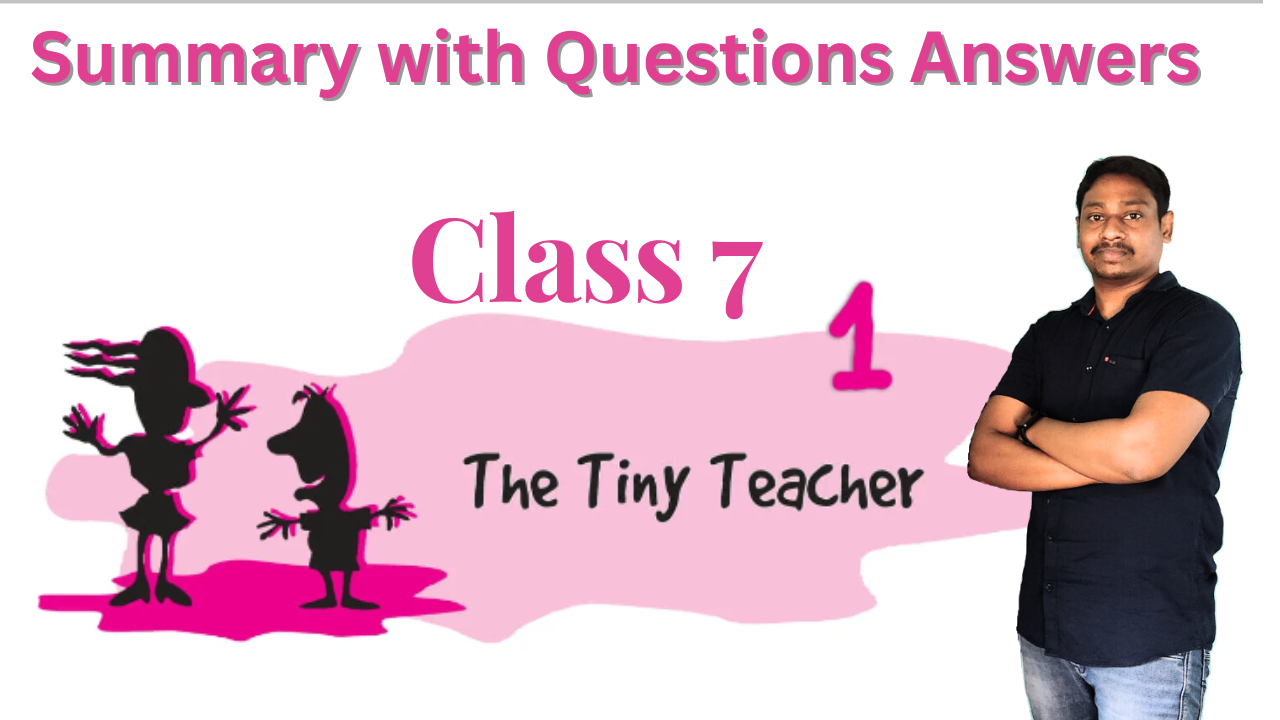“The Tiny Teacher” is a story included in the English textbook for Class 7 students. It is written by renowned Indian author, Ruskin Bond. The story revolves around the protagonist, the author himself, and his encounter with a tiny but wise creature—a lizard.
The narrator, a young boy, finds himself fascinated by a small, green lizard that lives on the window sill of his room. He is intrigued by the creature’s ability to catch flies and mosquitoes effortlessly. The boy realizes that the lizard is like a teacher, imparting lessons through its actions.
The young boy observes the lizard’s patience, focus, and precision while hunting its prey. He realizes that it teaches him valuable life lessons such as determination, perseverance, and the importance of paying attention to detail. The lizard becomes a symbol of wisdom and inspiration for the narrator.
As time passes, the lizard becomes a constant companion to the boy, teaching him about the natural world and the art of survival. The boy grows fond of the lizard and becomes protective of it. However, his fascination with the tiny teacher is met with skepticism and disapproval from his family and friends.
Despite the criticism, the boy continues to learn from the lizard and is grateful for its presence. The story ends with the narrator acknowledging the profound impact the tiny teacher has had on his life. He realizes that even the smallest creatures can offer great lessons if we are willing to observe and learn from them.
In summary, “The Tiny Teacher” is a heartwarming story about the transformative power of observation and the wisdom that can be gained from the simplest of creatures. It emphasizes the importance of being open to learning from unexpected sources and finding inspiration in the world around us.
The Tiny Teacher Questions Answers
Q1: Who is the author of “The Tiny Teacher”?
A1: The author of “The Tiny Teacher” is Ruskin Bond.
Q2: What is the story about?
A2: The story revolves around a young boy who learns valuable life lessons from observing a small lizard that lives on the window sill of his room.
Q3: What lessons does the lizard teach the narrator?
A3: The lizard teaches the narrator lessons of determination, perseverance, patience, focus, and the importance of paying attention to detail.
Q4: How does the narrator feel about the lizard?
A4: The narrator feels fascinated by the lizard and grows fond of it. He considers the lizard as a teacher and protector.
Q5: How does the story end?
A5: The story ends with the narrator realizing the profound impact the tiny teacher has had on his life. He acknowledges the wisdom and inspiration he has gained from observing the lizard.
Q6: What is the theme of “The Tiny Teacher”?
A6: The theme of the story revolves around the transformative power of observation and the wisdom that can be gained from even the smallest creatures.
Q7: How do the narrator’s family and friends react to his fascination with the lizard?
A7: The narrator’s family and friends are skeptical and disapproving of his fascination with the lizard.
Q8: What is the message conveyed in “The Tiny Teacher”?
A8: The story conveys the message that we should be open to learning from unexpected sources and find inspiration in the world around us, even in the smallest creatures.
The Tiny Teacher Questions Answers
Q9: What are some examples of the lessons the narrator learns from the lizard?
A9: The narrator learns determination from observing how the lizard patiently waits for its prey and strikes with precision. He also learns perseverance as he witnesses the lizard’s repeated attempts to catch its prey without giving up. Additionally, the narrator learns the importance of focus and paying attention to detail as he sees how the lizard carefully tracks and captures flies and mosquitoes.
Q10: How does the narrator’s perception of the lizard change over time?
A10: Initially, the narrator is fascinated by the lizard’s hunting abilities and sees it as a small but wise creature. As time passes, his fascination deepens, and he develops a strong bond with the lizard. He starts considering it as a teacher and becomes protective of it, valuing its presence and the lessons it imparts.
Q11: What challenges does the narrator face in his admiration for the lizard?
A11: The narrator faces skepticism and disapproval from his family and friends regarding his fascination with the lizard. They fail to understand the lessons he learns from observing the small creature, leading to a sense of isolation in his admiration.
Q12: Why is the lizard referred to as the “tiny teacher”?
A12: The lizard is referred to as the “tiny teacher” because it imparts valuable life lessons to the narrator through its actions and behaviors. Despite its small size, the lizard serves as a teacher, guiding the narrator in understanding determination, perseverance, and focus.
Q13: What is the significance of the lizard in the story?
A13: The lizard symbolizes wisdom, inspiration, and the potential for learning from the smallest and often overlooked aspects of life. It represents the idea that valuable lessons can be found in unexpected places and teaches the narrator the importance of observation and appreciation for nature.
Q14: How does “The Tiny Teacher” encourage readers to appreciate the natural world?
A14: Through the story, “The Tiny Teacher” encourages readers to observe and appreciate the natural world around them. It emphasizes the beauty and wisdom found in even the tiniest creatures and encourages a deeper connection with nature.

